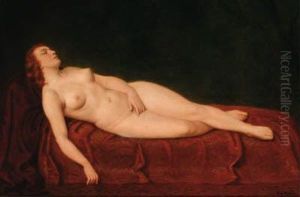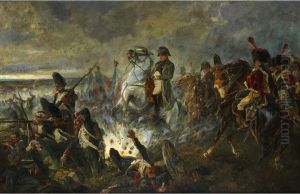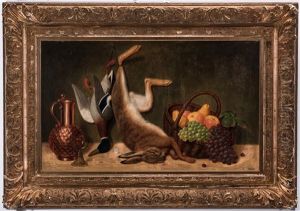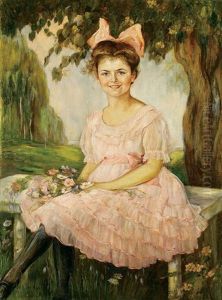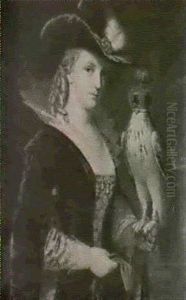Friedrich Emil Klein Paintings
Friedrich Emil Klein was a notable figure in the realm of art, particularly recognized for his contributions to the development of modern art in the 20th century. Born in 1898, Klein's early life was immersed in a period of rapid change and innovation, which influenced his artistic direction and the evolution of his unique style. Though not as widely known as some of his contemporaries, Klein's work played a significant role in the art movements of his time, reflecting the complexities and tumultuous nature of the twentieth century.
Klein's artistic journey began in the post-World War I era, a time when the art world was experiencing significant shifts. The aftermath of the war brought about a sense of disillusionment, which artists like Klein sought to express through their work. He was drawn to the emerging styles of Expressionism and Surrealism, which aimed to depict the inner world of emotion and imagination rather than realistic representations of the external world. Klein's work often explored themes of human psychology, dream imagery, and the subconscious, showcasing a fascination with the deeper aspects of the human experience.
Throughout the 1920s and 1930s, Klein developed his technique and style, experimenting with various mediums and forms. His contributions during this period were part of a larger movement that sought to redefine art's purpose and presentation, challenging traditional norms and embracing a more introspective and abstract approach. Despite the challenging political and social climate of the time, particularly with the rise of Fascism and the onset of World War II, Klein continued to produce work that was both reflective and innovative.
After the war, Klein's art evolved further, incorporating elements of Abstract Expressionism, a movement that gained prominence in the late 1940s and 1950s. This period marked a significant phase in Klein's career, as he delved into more abstract representations, focusing on color, form, and the emotional impact of his pieces. His work from this era is characterized by its dynamic compositions and vibrant use of color, reflecting a sense of freedom and exploration.
Friedrich Emil Klein's death in 1990 marked the end of a prolific career that spanned much of the 20th century. Throughout his life, Klein witnessed and contributed to some of the most significant movements in modern art, leaving behind a legacy that continues to influence artists and art enthusiasts alike. His work is a testament to the power of art as a means of expression and reflection, capturing the essence of a century marked by both turmoil and tremendous creativity.

